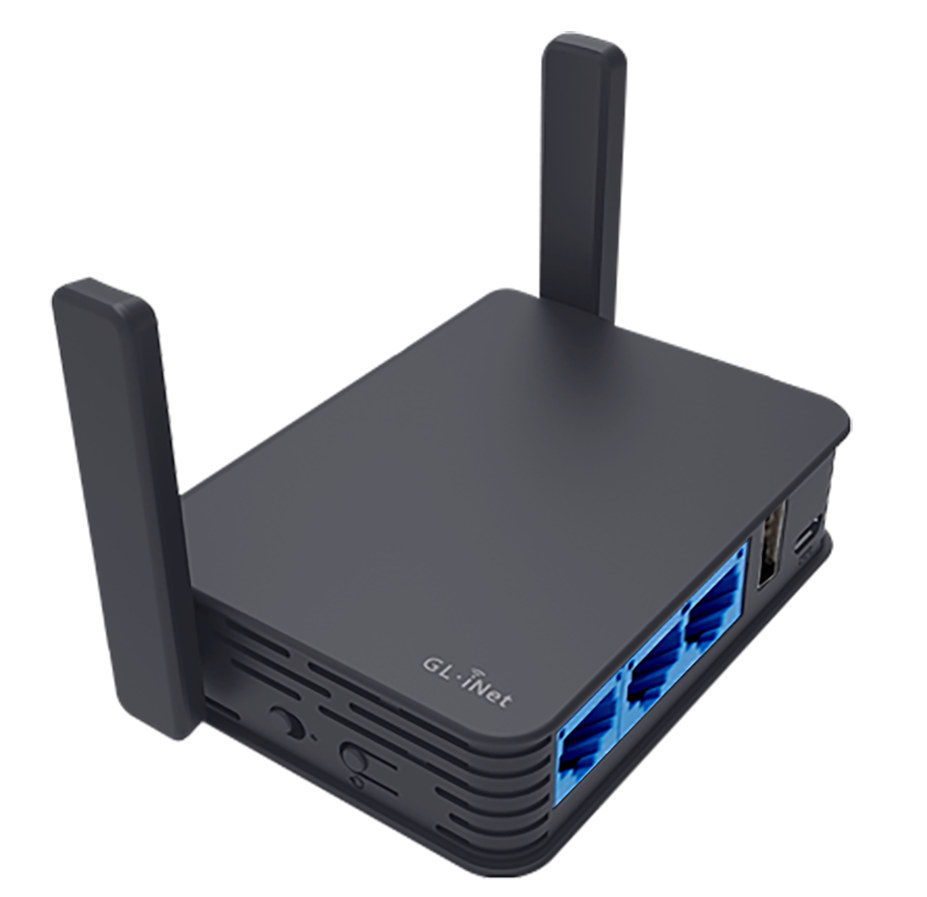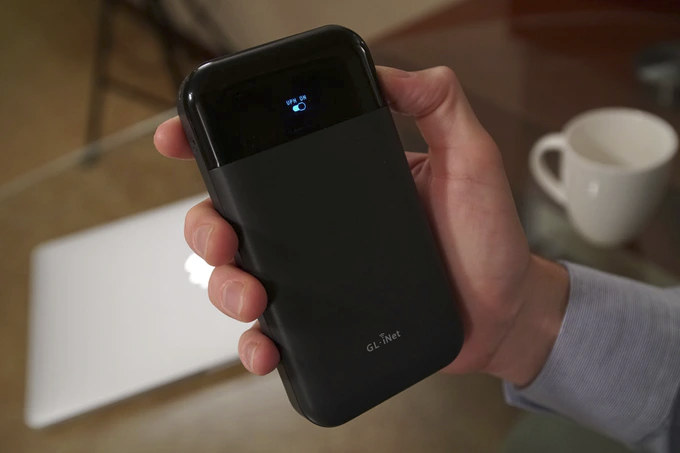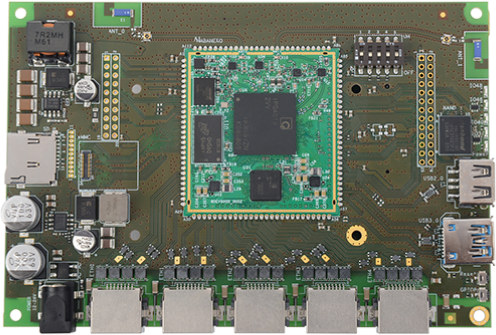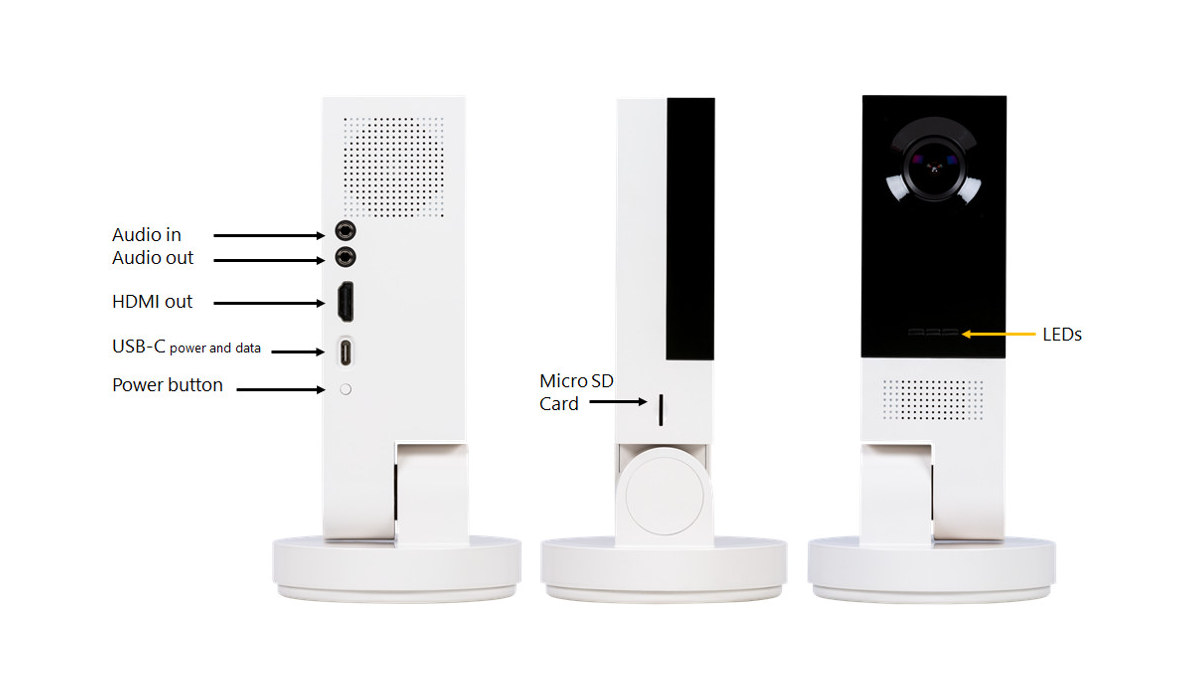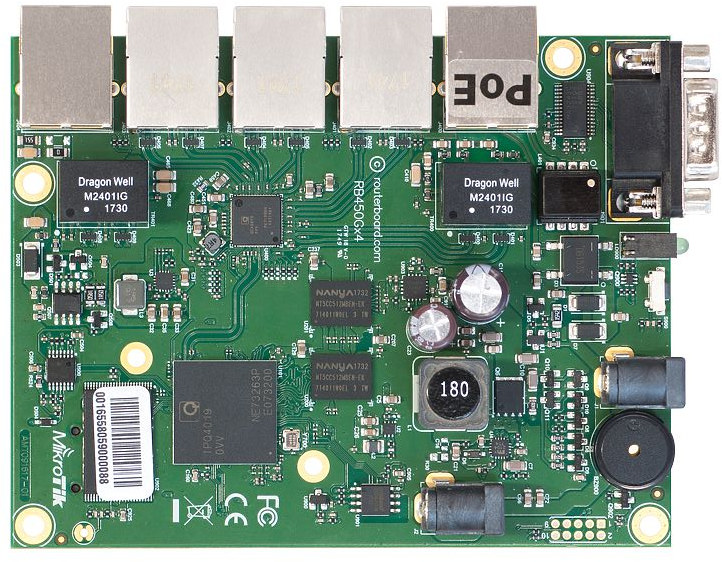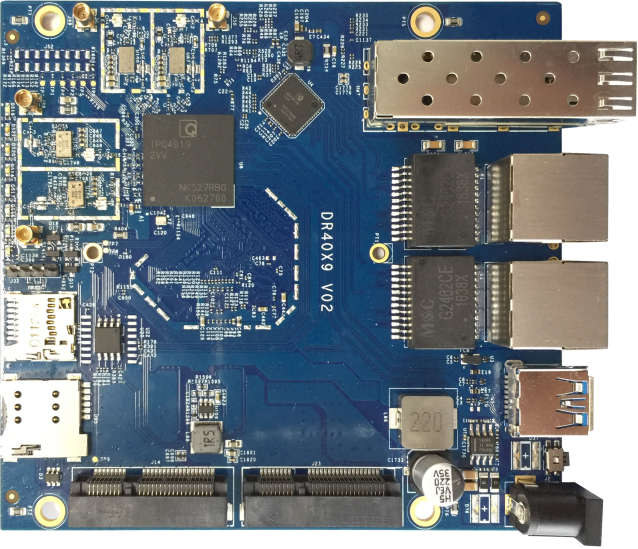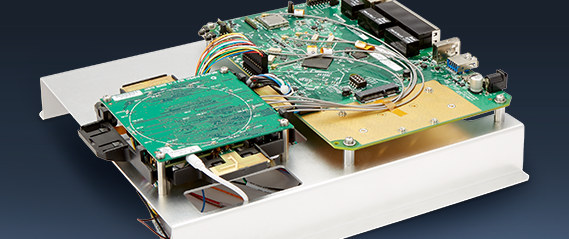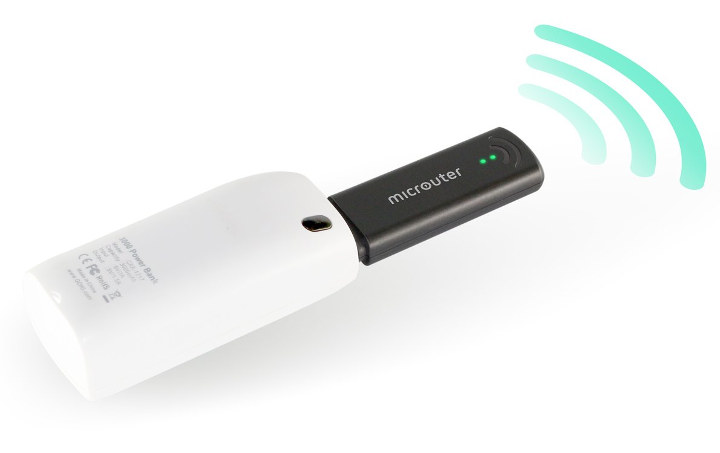A couple of months ago, we wrote about GL.iNet Mudi portable WiFi router with built-in 4G LTE connectivity and supporting features such as the Tor Project, up to 25 VPN providers, and Cloudflare DNS over HTTPS or TLS. Mudi was launched on Kickstarter and should start shipping very soon, but I was informed about another OpenWrt travel router from the company with GL.iNet Slate also supporting many of the same features, but doing away with built-in cellular connectivity and battery. GL.iNet Slate (GL-AR750S-Ext) router specifications: SoC – Qualcomm QCA9563 MIPS 74Kc processor @ 775MHz System Memory – 128MB DDR2 Storage – Dual Flash 16MB NOR + 128MB NAND, MicroSD card slot up to 128GB Networking Ethernet 1x Gigabit Ethernet WAN 2x Gigabit Ethernet LAN WiFi Dual-band 802.11 b/g/n/ac WiFi 5 with transmission rates up to 300Mbps (2.4GHz) + 433Mbps (5GHz) 2x 2dBi external antennas 3G/4G – Optional via cellular USB […]
Mudi is a Tor & VPN Enabled Portable 4G LTE WiFi Router (Crowdfunding)
GL.inet has made routers for a long time, and its latest product is called Mudi which they promote as a “4G LTE Privacy Router for Road Warriors”. Mudi is battery-powered, and designed to improve security and privacy compared to using only public WiFi access points, and comes with Tor and VPN support – the latter turned on/off with a physical switch – out of the box. Mudi (GL-E750) hardware specifications: SoC – Qualcomm QCA9530 MIPS24Kc processor @ 650 MHz System Memory – 128MB DDR2 Storage – 16MB + 128MB flash + MicroSD card slot up to 128GB Connectivity WiFi 2.4 GHz 802.11b/g/n WiFi 4 up to 300 Mbps 5 GHz 802.11n/ac WiFi 5 up to 433 Mbps Cellular – 4G LTE Cat.6 or Cat.4 module + NanoSIM card slot USB – USB type-C port Display – OLED display Misc – Power button, VPN switch button Power Input – 5V/2A Power […]
Habanero Qualcomm IPQ4019/IPQ4029 SoM Brings 802.11ac Wave2 WiFi to Linux Gateways and Routers
Last April, we first wrote about Qualcomm IPQ4019 quad-core Cortex-A7 processor with built-in 802.11ac Wave 2 WiFi, as it was found in Qualcomm Mesh Networking DevKit with support for Amazon Alexa. A few months later, we discovered router boards powered by either IPQ4019 or IPQ4029 processor such as Dakota DR40X9 or MikroTik RB450Gx4. The latter does not come with WiFi at all and instead leverages the hardware IPSec encryption built-into the processor. Habanero System-on-Module Today, we’ve come across the first IPQ4019 / IPQ4029 system-on-module we’ve countered so far, courtesy of 8devices with their Habanero and Habanero-I 802.11ac Wave 2 modules based on the respective processors. Habanero(-I) specifications: SoC – Qualcomm IPQ4019/IPQ4029 quad-core Arm Cortex-A7 processor @ 717 MHz with NEON, FPU, hardware-based NAT engine, and crypto accelerator System Memory – 512 MB DDR3L RAM Storage – 32MB NOR flash; up to 1 GB NAND flash on baseboard Connectivity QCA8075C 5-port […]
Microsoft Unveils The Vision AI Developer Kit For AI on the Edge
The field of Artificial Intelligence is getting more exciting every single day, and the big corporations and startups are massively pouring for it. One thing I am undoubtedly sure about is that the future will certainly be remarkable. Microsoft, the biggest software company in the world with sales over $100 billion has been venturing in the domain of artificial intelligence for a while now with cloud computing platform Azure and other related cloud computing services, but instead of its usual cloud computing route for AI, Microsoft is banking on AI on the edge with the introduction of the Vision AI Developer Kit in joint partnership with the semiconductor giant Qualcomm. With millions of data collected at the Edge, the potential of artificial intelligence on the edge is promising. AI cases performed on the Edge will help in making critical decisions, and more data insight can even facilitate important business scenarios. […]
$99 MikroTik RB450Gx4 Router is based on Qualcomm IPQ4019 SoC
A few days ago, we covered Dakota DR40X9 Wave-2 AC router board powered by Qualcomm QCA4019/QCA4029 SoC, but we were informed about MikroTik RB450Gx4, an Ethernet router with five Gigabit Ethernet ports, a serial port, two power jacks, and a microSD card slot that is also based on the 4-core Qualcomm IPQ4019 SoC. Mikrotik has used this SoC as the heart of its RB450Gx4 Router Board. It has 5 Ethernet ports, one of them able to power the board by means of Power-On-Ethernet (PoE), and another port can be used as PoE output. In addition, it may be powered from 2 DC Jacks. Router price is 99$, making it a great choice for 5 ports, PoE enabled router with a great SoC which allows to use Mikrotik Router OS firmware or to install a Linux distribution, like OpenWrt. Additionally, it provides PCB temperature and voltage monitoring. MikroTik RB450Gx4 Router specifications: […]
Dakota DR40X9 Wave-2 AC Router Board is Based on Qualcomm QCA4019/QCA4029 WiSoC
Qualcomm is mostly known for its Snapdragon processors for mobile devices and wearables, but the company is also making WiFi chipsets via their (previously) “Atheros” family. Some of their latest WiFi SoCs are IPQ4019 and IPQ4029 (aka QCA4019/QCA4029) Wave-2 802.11ac “Dakota” SoCs for routers, gateways, and access points. We recently covered the official Qualcomm mesh networking devkit powered by IPQ4019 processor, but there are now third parties also offering solutions based on QCA40x9 processor such as Dakota DR40X9 Wave-2 AC router board. Dakota DR40X9 board specifications: SoC (one of the other) Dakota DR4019 -Qualcomm IPQ4019 quad-core Arm Cortex A7 processor @ 717 MHz with 802.11ac Wave 2 WiFi Dakota DR4029 – Qualcomm IPQ4029 quad-core Arm Cortex A7 processor @ 717 MHz with 802.11ac Wave 2 WiFi System Memory- 256MB~512MB DDR Storage – 2MB~32MB NOR Flash, 128MB NAND Flash, microSD card slot Connectivity Wired Dual 10/100/1000Mbps Gigabit Ethernet (RJ45) 1x optional […]
Qualcomm Mesh Networking DevKit Supports Amazon AVS
The Qualcomm Mesh Networking Development Kit for Amazon AVS enables integration of Amazon Alexa Voice Services into mesh Wi-Fi systems. A somewhat recent blog post on Amazon Developer website explains the devkit is the first ever Amazon-qualified reference design for a mesh WiFi system with Alexa built-in. The reference platform is based on the Qualcomm IPQ4019 SoC, includes a rectangular 4-microphone array, far-field audio processing algorithms for noise suppression, acoustic echo cancellation, wake word engine, and the AVS Device SDK. Qualcomm Mesh Networking DevKit specifications: WiSoC – Qualcomm IPQ4019 quad core Arm Cortex-A7 processor @ 717 MHz with SIMD DSP, WiFi 5; 40 nm process technology System Memory – 1GB DDR3L RAM Storage – eMMC flash and microSD card Display I/F – LCD interface Connectivity WiFi Standards: 802.11ac Wave 2, 802.11ac, 802.11p, 802.11n Bands: 2.4 GHz, 5 GHz Peak speed: 1.733 Gbps Channel Utilization: 20/40/80 MHz, 5/10/20/40 MHz MIMO Configuration: […]
GL-USB150 OpenWrt Microrouter Looks Like a USB Flash Drive
There are plenty of small low cost routers capable of running OpenWrt, including the TP-Link WR703N or Marstek MPR-N9 model which we covered several year ago. GL.inet also made several tiny routers that ended up being supported by OpenWrt, including their GL-USB150 microrouter that looks like a USB flash drive, but is really an Atheros AR9331 router that can be powered by any USB ports. GL-USB150 microrouter specifications: CPU – Qualcomm QCA9331 (Atheros AR9331) MIPS processor @ 400MHz System Memory – 64MB DDRII Storage – 16MB NOR Flash Connectivity – 2.4GHz 802.11b/g/n WiFi up up 150Mbps transmission rate Power input – 5V/1A via USB port Power consumption – <1W Dimension – 82x24x11mm Weight – 10 grams There’s no Ethernet port, no extra USB port to add 3G/4G connectivity, and the microrouter can either be accessed wirelessly when connected to a power bank, or via Ethernet over USB when connected to […]


